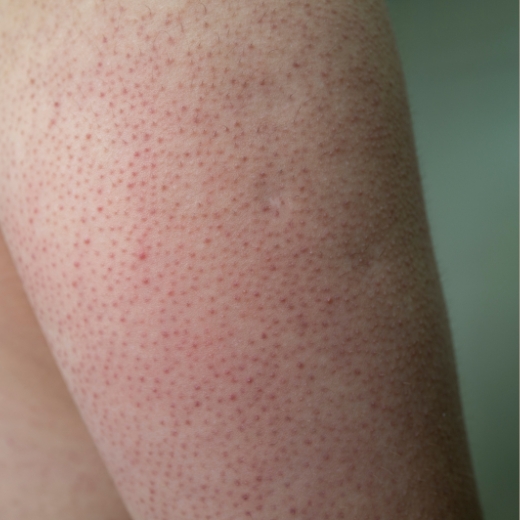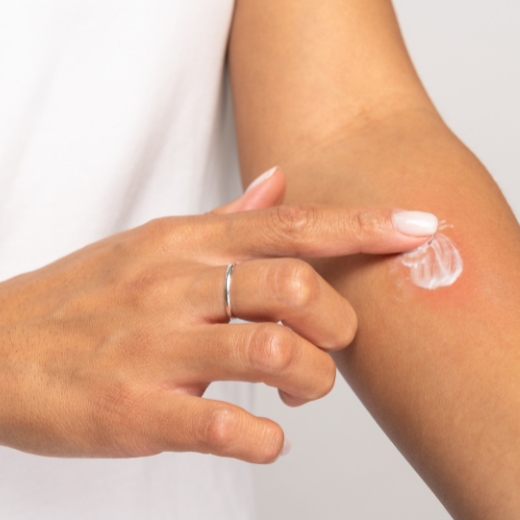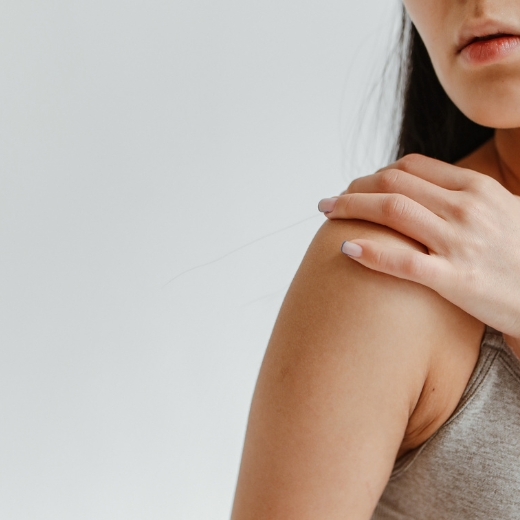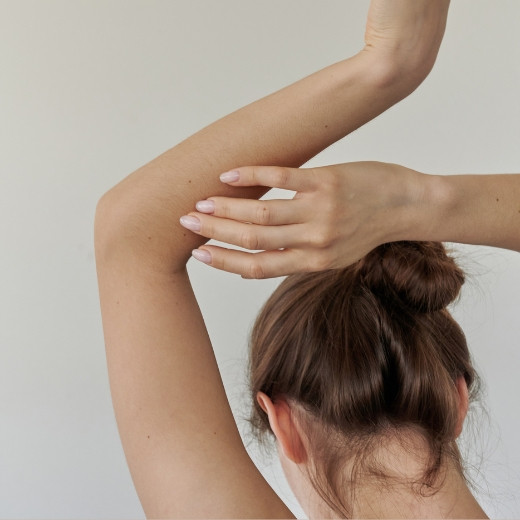Are You A Bumpy Baddie? All About Keratosis Pilaris
Posted by Nikki Wisher on Jan 13th 2025
We all want our skin to be smooth and supple. If you know the delight of feeling your silky legs right after a shave or a wax, you know exactly what I’m talking about. But if that joy is a rarity for you because of tiny bumps on your skin, you might actually have a condition called keratosis pilaris or KP. Don’t panic – it’s completely harmless. But getting your smooth skin back starts with knowing what you’re dealing with, so here’s everything you need to know about KP.
What Is Keratosis Pilaris?
Keratosis is a benign but chronic skin condition in which the keratin in your skin causes tiny bumps and rough dry patches on your skin. The bumps are most often on your upper arms but they’re also common on the thighs, cheeks, or butt. They aren’t typically painful or itchy, so you might not even notice them at first. As I noted, the condition isn’t dangerous and it doesn’t have any health complications – it’s just not everyone’s cup of tea from an aesthetic standpoint.

What Causes KP?
The tiny bumps that characterize KP happen when you have a buildup of keratin, which is a natural protein in your body that protects your skin from irritants and infections. Excess keratin is supposed to flake off of your skin, but in keratosis pilaris, it doesn’t flake off and instead it builds up and clogs tiny hair follicles – that’s what causes the bumps. Researchers don’t really know why some people get KP, but it seems to have a genetic link. The symptoms also tend to get worse when your skin is drier, like in fall and winter when the air is dry.
How to Treat Keratosis Pilaris
There’s no cure for KP, but there’s plenty you can do to improve how your skin looks and feels. Here are a few tricks to try.
Make Moisturizer Your Best Friend
Hydrating your skin is one of the most powerful things you can do to make your KP skin feel smoother and softer. Make a habit of using moisturizer every day – ideally over your whole body but at least on the areas where you have KP symptoms.

Exfoliate Regularly
If you love your skin to be smooth then you might already know the glory of exfoliation, but did you know that exfoliating routinely is a great way to manage keratosis pilaris? Exfoliating, whether you’re using a textured product or a chemical exfoliator like a salicylic acid product, removes dead skin cells from your skin’s surface to give it a smoother texture. Nearly anyone can benefit from exfoliating but when you have KP, the exfoliation also buffs away excess keratin so it doesn’t clog your pores and create those bumps.
Choose an exfoliator that isn’t too irritating for your skin and aim for using it a few times a week, or as instructed on the bottle. Make sure you moisturize after exfoliating, too, because otherwise it can dry out your skin further.
Try Retinoids
You might have heard of retinoids before, especially as part of anti-aging skin care. And yes, they’re effective and popular to reduce fine lines and wrinkles. But that’s because they work by enhancing your cell turnover (your body’s natural process of replacing older cells with bright new ones). This cell turnover does help your skin look younger but it also helps you shed excess keratin so it doesn’t block your hair follicles and create those little KP bumps. That’s why it’s helpful for KP as well as aging.
There are a few things to keep in mind though. First of all, for KP on your body, make sure you use a retinoid that’s designed for body use because most retinoids are for facial use. Second, retinoids can dry out or irritate your skin, so always moisturize afterward. Third, retinoids can make your skin more sensitive to the sun as well, so use these products at night rather than in the morning. And finally, retinoids might not be advised when you’re pregnant or nursing, so if you are, ask your healthcare provider.
Avoid Habits That Dry Your Skin
On top of using moisturizer to keep your skin hydrated, if you have KP, it’s a good idea to also avoid things that will make your skin drier. The most common habits to change are:
- Using hot water in the shower – keep it warm instead of piping hot
- Taking long showers, especially if the water is hot
- Using skin products that might irritate your skin like products with fragrances or dyes
These aren’t big changes, but they can help to minimize the dryness and your KP symptoms as a result.
Getting Smooth, Soft Skin Despite Keratosis Pilaris
As important as keratin is for your skin, it’s frustrating when it simply doesn’t behave the way it should and you end up with rough and bumpy skin. But fortunately, the tips above make KP a manageable condition so you can still get the smooth skin of your dreams. Try them out and enjoy!


